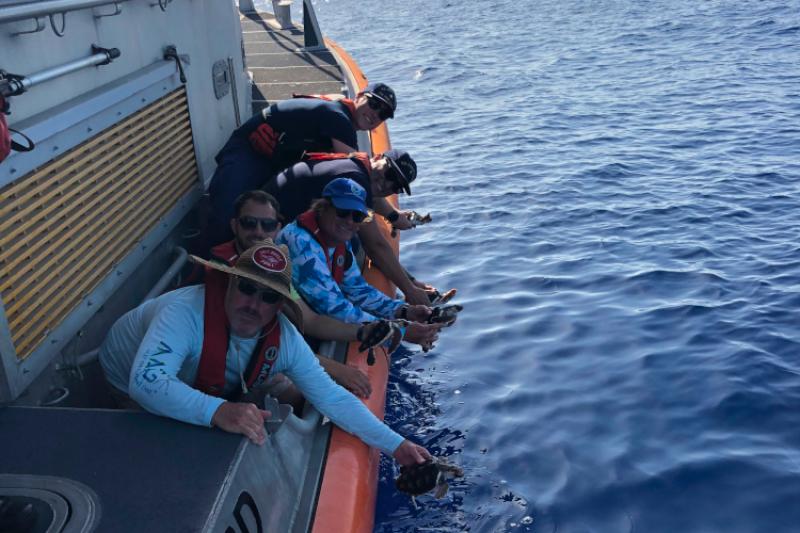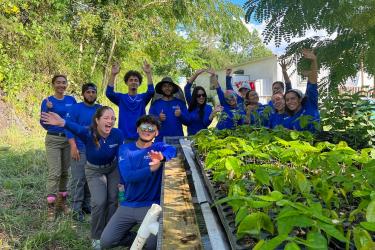NOAA Fisheries scientists and the Florida Fish and Wildlife Conservation Commission released 85 loggerhead sea turtles into the ocean off Florida’s east coast. The turtles were raised in captivity as part of a one-of-a-kind program. It tests the success of devices used during commercial fishing operations to reduce sea turtle bycatch and mortality.
The turtles are part of 2-weeks of testing that took place near Panama City, Florida in mid-June. Scientists from NOAA’s Southeast Fisheries Science Center evaluate the effectiveness of turtle excluder devices (TEDs) in shrimp trawls.
TEDs are the part of a shrimp trawl that enable sea turtles to escape from fishing nets, while minimizing shrimp loss. They are required by law, as part of an effort to increase sea turtle populations. During the testing, divers observe and record sea turtles' behavior to document how well they can escape from TED‑equipped shrimp trawls—all in less than 5 minutes.
“We’ve been doing this type of testing for more than 30 years, learning from each test and adapting TED best practices in real time,” said NOAA biologist Ben Higgins. “By using live sea turtles, we know we are getting the most reliable data.”
Sea turtle restoration funds from the Deepwater Horizon oil spill Natural Resource Damage Assessment program, specifically the Open Ocean Trustee Implementation Group, support this particular project. The goal is to reduce incidental captures of small juvenile sea turtles in the shrimp trawl fishery and inform future restoration projects to restore sea turtles.
Biologists raise loggerhead sea turtles, hatched on the east coast of Florida, in Galveston, Texas. Following this project, the turtles are returned to Florida. Biologists then release all of the turtles, unharmed, to an area where wild turtles of the same size are found.
“From what we can tell, the turtles we release become fully assimilated into the wild stocks,” Higgins added.
This year, the U.S. Coast Guard Station Fort Pierce provided vessel support to release the sea turtles. Once released, they begin seeking food, and may venture into passes and bays where crabs and other shellfish—a staple of their diet—are commonly found.
As a reminder, sea turtles are protected under the Endangered Species Act and may only be handled by authorized individuals. It can also be unsafe—even small sea turtles will bite people and can inflict painful wounds if handled or provoked.
Any sea turtle that washed ashore or appears to be experiencing difficulty swimming may be sick or injured. If you see a sea turtle that appears to be in distress, injured, or dead please contact your local Sea Turtle Stranding and Salvage Network. In Florida, call Florida Fish and Wildlife Conservation’s Wildlife Alert Hotline: (888) 404‑FWCC (3922). They will ensure the turtles are examined and treated by qualified wildlife professionals. Do not touch or remove anything from these turtles.


